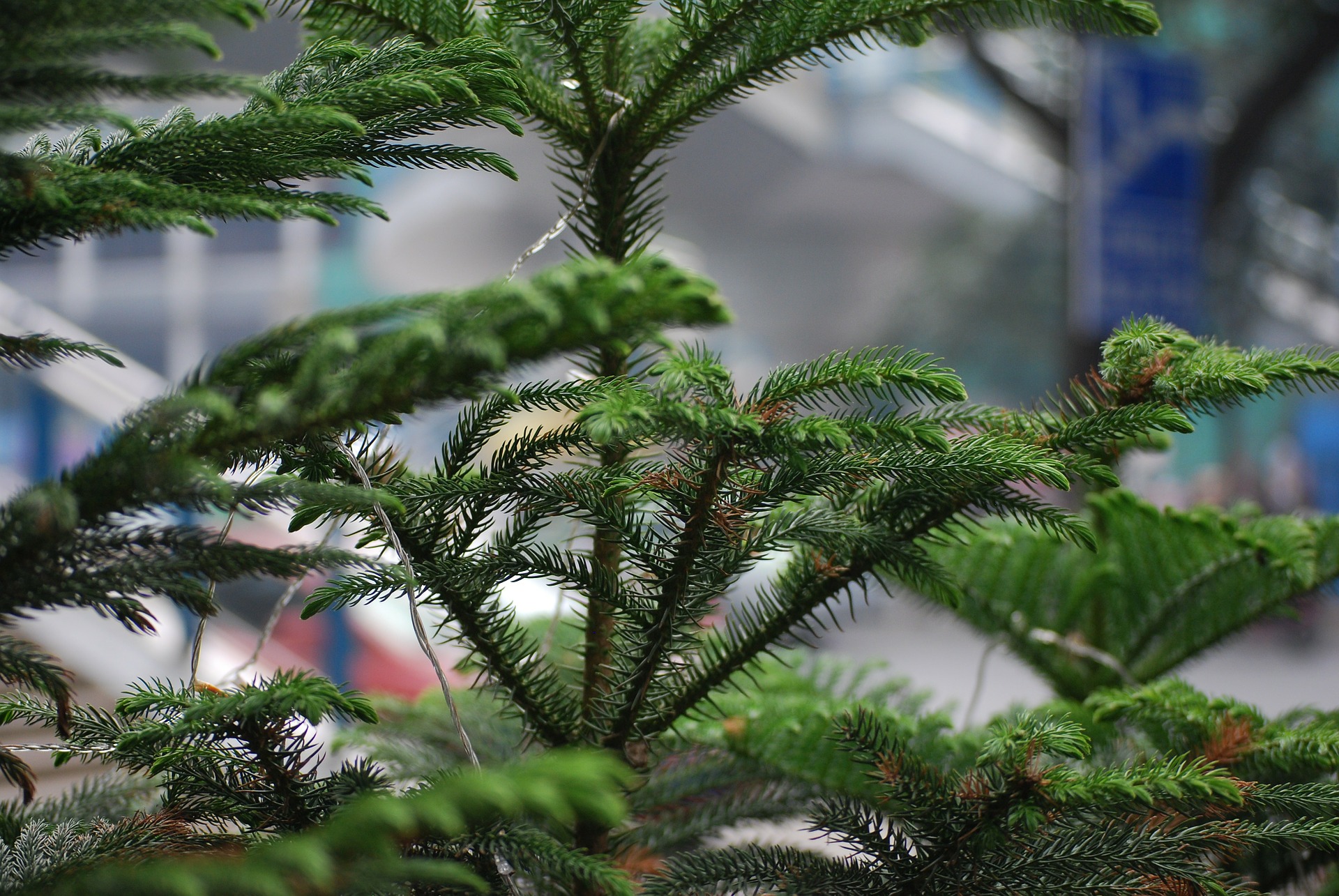Norfolk Island Pine

Norfolk pines have distinctively flat branches and short soft needles. They enjoy humid environments. With age, and lack of humidity, the needles along the trunk will fall off. Dead, lower branches are a sign that the plant has been dehydrated. The dry needles will not come back. These plants do best with consistency stay on a watering schedule. Over watering results in sporadic bright yellow needle clusters that come off very easily, and don’t come back. Check to see if the plant is standing in lots of water.
PRUNING:
They grow upward, their trunk thickens and the pine bows increase in size. It is not recommended to cut their growing tips off. Its symmetrical shape would be destroyed. The only maintenance pruning to be done is removal of dead lower branches.
GENERAL INFORMATION:
A handsome and easy to grow conifer with many uses – seedlings for the terrarium, small plants for table display and tall trees as bold specimens in halls or large rooms. It is a slow growing tree (3 to 6 inches a year) bearing stiff branches covered with needles. The plant grows wild on the 3 by 5 mile speck of land in the South Pacific for which it was named. Norfolk Island Pines resemble fir trees, and can be decorated at Christmas time.
LIGHT AND TEMPERATURE:
Plants do best in bright direct (East, North or West exposure), or curtain-filtered sunlight (South exposure). They prefer night temperatures of 50 to 55 degrees and day temperatures of 68 to 72 degrees, but can tolerate a range from 45 to 85 degrees.
WATER AND SOIL:
Soil must dry slightly between thorough waterings. Repot at 3 to 4 year intervals. Use a highly organic packaged potting mixture formulated for African Violets. Assure plant has good drainage. For plants that can be moved, water them thoroughly in a big sink – so you can wash the branches and stems at the same time. You can let them drain off in the sink.
FERTILIZER:
Feed established plants every three or four months, but wait four to six months before feeding newly purchased or potted plants. Use 5-10-5 fertilizer, or 30-10-10 at half strength.
PROPAGATION:
Difficult, but not practical, it’s best to buy plants.
